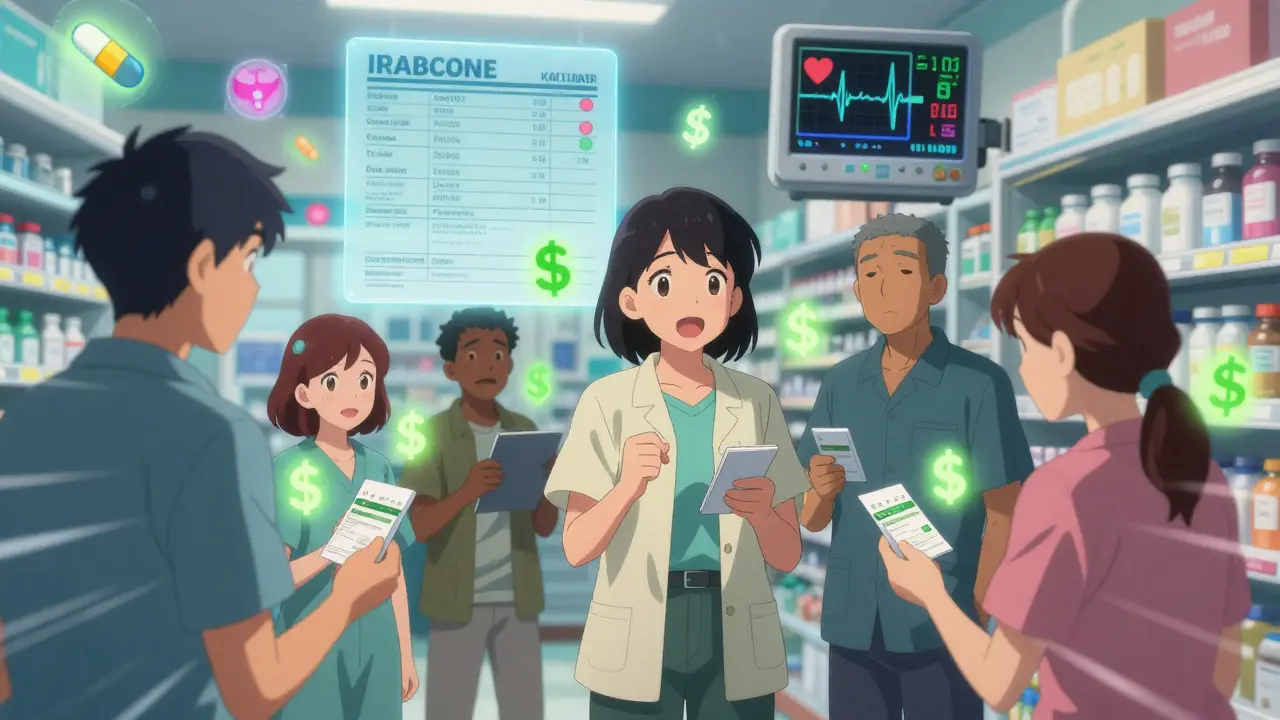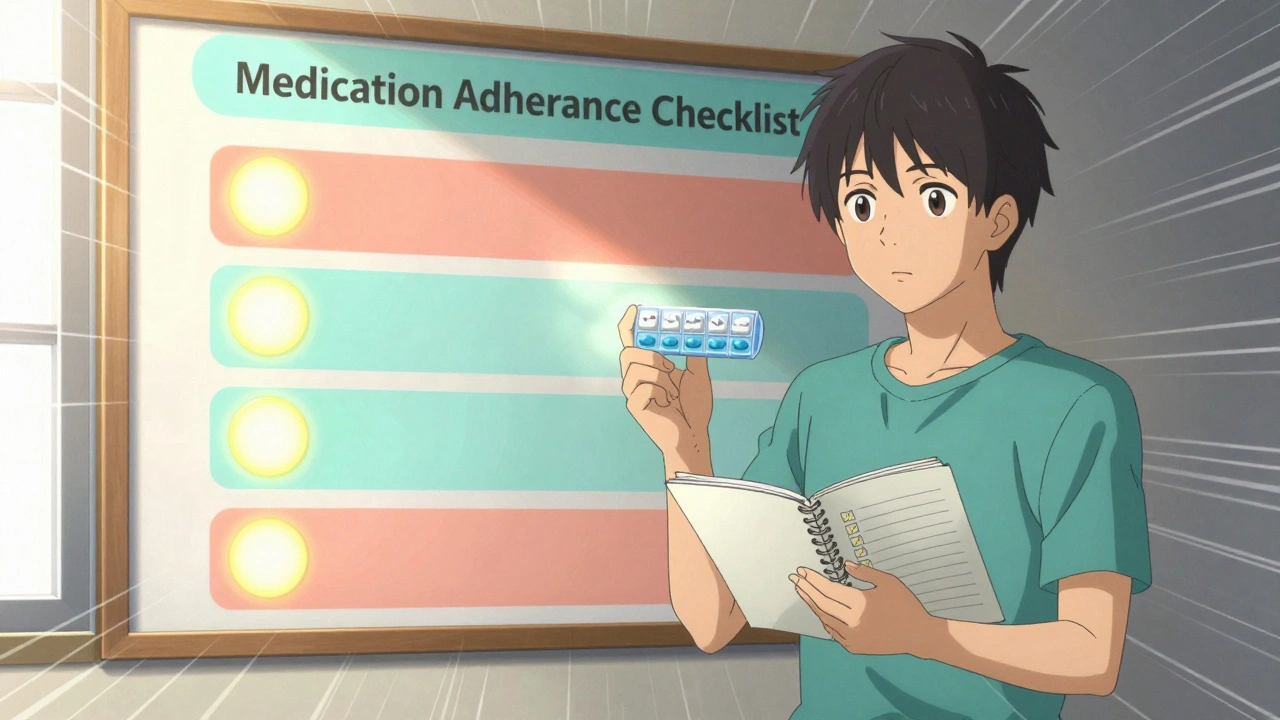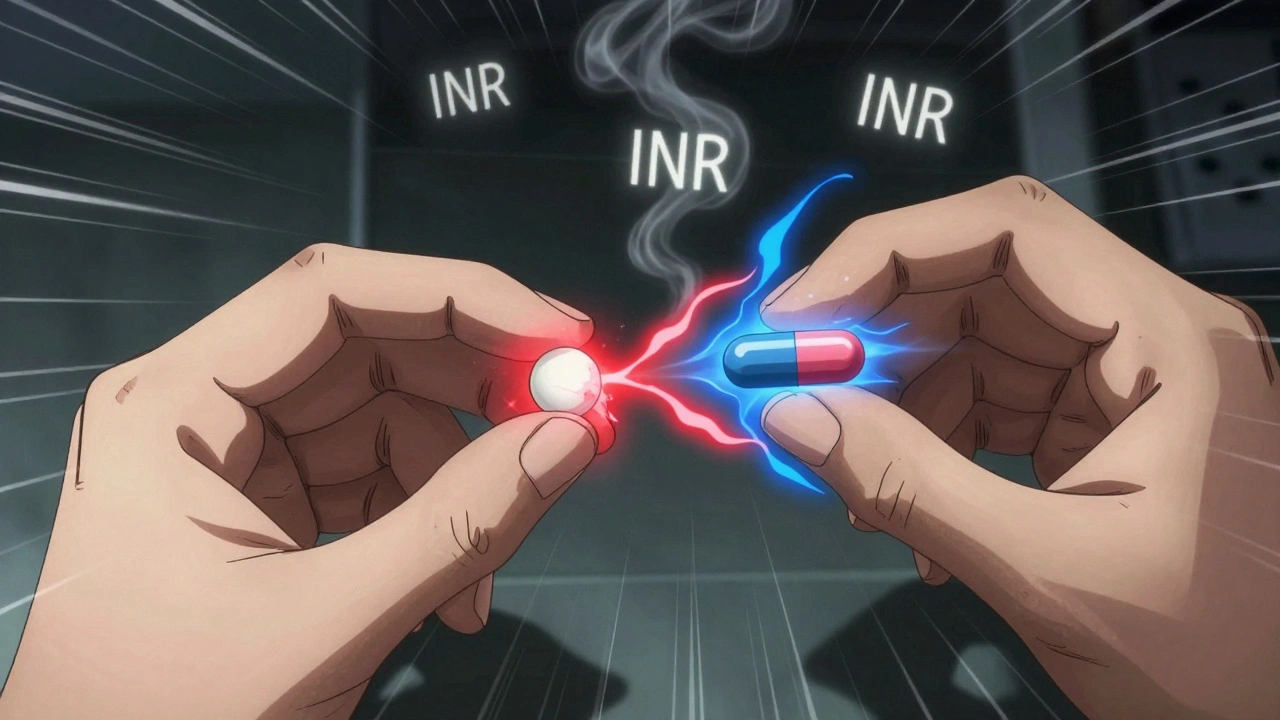Buy Generic Celexa (Citalopram) Online Safely in 2025: Real Prices, Risks, and Smarter Options

If you’re hunting for cheap generic Celexa (citalopram) online, you’re probably dealing with two headaches at once: the price and the worry about getting the real thing. Here’s the simple truth-yes, you can buy generic Celexa online at a fair price in 2025, but you need a valid prescription and a legit pharmacy. I’ll show you what a good price looks like, how to spot safe sites fast, and what to do if your budget is tight. No dodgy workarounds. No mystery pills. Just straight, practical steps.
Before we dive in, set expectations: you won’t find lawful “no-prescription” deals in the U.S. for citalopram. If a site offers that, it’s not safe. Also, “cheap” should still look like normal market pricing-too low often means counterfeit or stolen stock. You’ll see what normal looks like below, plus simple rules to keep you out of trouble.
Where to buy safely and what “cheap” actually costs (2025)
Quick orientation. Generic Celexa is citalopram, an SSRI. It’s been off-patent for years, so pricing is stable and competitive. The big money leak isn’t the drug-it’s using the wrong channel. Your jobs here are simple: pick a safe pharmacy model, know a fair price range by dose, and avoid red flags.
Safe ways to buy online (U.S., 2025):
- Licensed U.S. mail-order pharmacies (often tied to your insurer or big retail chains).
- Telehealth services that issue a prescription after a proper evaluation and ship via a U.S.-licensed pharmacy.
- Price-comparison plus a discount card applied at a partner mail-order or local pickup.
- Employer/plan mail-order programs (90-day supplies are usually the cheapest per tablet).
Red flags to avoid-if you see any of these, close the tab:
- No prescription required for citalopram.
- No physical U.S. address or no pharmacist contact (even a chat line staffed by non-pharmacists is a red flag).
- Prices that are “too good,” like pennies per month, far below typical U.S. generic rates.
- No state pharmacy license listed; no NABP or FDA BeSafeRx safety cues; no .pharmacy domain or accreditation details.
FDA BeSafeRx guidance: “If a website will ship prescription medicines without a prescription, it’s not safe.” - U.S. Food and Drug Administration, BeSafeRx (2025)
So what’s a fair price in 2025? Citalopram is one of the least expensive SSRIs when you use discount pricing or insurance. Cash prices vary by dose, supply length, and the channel you choose. Here’s a realistic snapshot for a 30-day supply:
| Channel | 10 mg (30 tabs) | 20 mg (30 tabs) | 40 mg (30 tabs) | Notes |
|---|---|---|---|---|
| Retail pharmacy with discount | $4-$10 | $4-$12 | $6-$15 | Common with big-box or grocery chains using coupon pricing |
| Mail-order (insurer-affiliated) | $8-$20 | $8-$22 | $10-$28 | Often best per-tablet if you do 90-day fills |
| Telehealth + ship (subscription) | $10-$25 | $10-$25 | $12-$30 | May bundle clinician visit; membership fees can apply |
| Local cash price without discounts | $10-$30 | $12-$35 | $15-$40 | Varies widely; always check a discount program |
Where do these ranges come from? Think real-world cash prices you’d see on major price engines, GoodRx-type benchmarks, and typical insurer mail-order rates as of mid-2025. If you’re seeing under $4 for a month consistently, be cautious; if you’re seeing $40+ for low doses without insurance, you’re probably overpaying. The sweet spot with discounts is often $4-$12 for 20 mg, 30 tablets, and even lower per tablet for 90-day fills.
Low-stress way to choose a channel:
- If you have insurance: check your plan’s mail-order pharmacy first; ask about a 90-day supply to cut per-tablet costs.
- If you’re paying cash: use a reputable price tool, then order via a licensed mail-order or pick up at the listed partner pharmacy.
- If you need a prescription: book a telehealth visit with a U.S.-licensed clinician; they can send the script to your chosen pharmacy.
One more tip on “cheap:” the manufacturer matters for pill shape and imprint, but not effectiveness. Pharmacies may switch manufacturers based on supply. If a switch spooks you, ask the pharmacy to keep the same NDC (may raise price) or talk to your prescriber.

Step-by-step: how to order citalopram online the right way
This is the clean, safe process that works for most people in the U.S. in 2025. It protects you from counterfeits, keeps your costs in check, and makes refills painless.
-
Confirm the prescription.
- Citalopram requires a valid prescription. No exceptions.
- If you don’t have one, schedule a licensed telehealth visit or see your usual clinician. Expect basic screening for depression/anxiety, meds review, and contraindications like heart rhythm issues.
-
Pick your dose and plan.
- Common doses: 10 mg, 20 mg, 40 mg once daily. Many start at 10-20 mg. Your prescriber sets this.
- Ask if a 90-day supply is appropriate-often the cheapest route with mail-order.
-
Compare prices by channel.
- Check a well-known price comparison tool for your zip code and dose.
- Note the pharmacy name, supply length, and whether the price requires a coupon.
-
Verify the pharmacy.
- Look for state license info on the site (every U.S. pharmacy has a state license). Cross-check on your state board of pharmacy’s website.
- Look for FDA BeSafeRx safety pointers or NABP accreditation (.pharmacy domains qualify). Avoid any site offering Rx drugs without a prescription.
-
Place the order.
- Create an account. Upload insurance, if you’re using it, and your prescription if they don’t contact your prescriber directly.
- Choose dose and quantity exactly as prescribed. Apply the discount coupon if needed.
- Confirm shipping speed and refill options. Free standard shipping is common with mail-order.
-
On delivery, do a 30-second safety check.
- Check the label: your name, drug name (citalopram), dose, directions, lot and expiration date.
- Look at the pills: imprint code, color, shape. Use a pill identifier (from a major pharmacy or the manufacturer’s info) if anything looks off.
- If the tablet looks different from last time, the manufacturer likely changed-call the pharmacy to confirm.
-
Track response and side effects.
- Most people notice mood benefits in 2-4 weeks; anxiety can take a bit longer. Sleep and appetite changes can show sooner.
- Log any side effects daily for the first month-nausea, headache, dry mouth, sexual side effects, sleep changes are the common ones.
- Report any red flags immediately: chest pain, fainting, fast or irregular heartbeat, severe dizziness, serotonin syndrome symptoms (agitation, sweating, tremor), or allergic reaction.
Rules of thumb (money and safety):
- Under $0.15-$0.40 per 20 mg tablet is a normal discounted range. Pennies per month is a red flag.
- 90-day supplies lower per-tablet costs and reduce shipping fees.
- Brand Celexa costs far more and doesn’t work better for most people; generic citalopram is therapeutically equivalent.
- Never mix with MAOIs or start soon after stopping them (washout period needed). Watch for QT-prolonging drug combos.
On prescriptions and legality: U.S. law requires a valid prescription for citalopram. Importing prescription meds for personal use is heavily restricted. Stick with U.S.-licensed pharmacies or your insurer’s mail-order service. If you’re outside the U.S., follow your country’s rules and use your national pharmacy regulator’s verification tools.

Risks, side effects, and smarter alternatives if price is the problem
The bargain you want is the right med at the right dose, safely sourced, at a fair price. If cost is your only blocker, you have options that don’t involve sketchy websites.
Risk check: who should be cautious with citalopram?
- People with heart rhythm problems (long QT syndrome), recent heart attack, or low potassium/magnesium.
- Adults over 60 often have a recommended max dose of 20 mg/day due to QT risk.
- Anyone taking other QT-prolonging meds (talk to your clinician or pharmacist).
- Do not mix with MAOIs, linezolid, or methylene blue; avoid with pimozide.
What do the authorities say? The FDA’s citalopram Drug Safety Communication warns not to exceed 40 mg/day in adults and sets a common max of 20 mg/day for older adults or those with certain heart risks. MedlinePlus and NHS resources echo these cautions and explain gradual dose changes, not abrupt stops.
Common side effects (usually milder and often temporary):
- Nausea, dry mouth, sweating, tremor, headache
- Sleep changes (drowsy or restless), vivid dreams
- Sexual side effects (lowered libido, delayed orgasm)
Serious but less common-call your clinician urgently or 911 for:
- Signs of heart rhythm issues: fainting, palpitations, fast or irregular heartbeat
- Serotonin syndrome: agitation, fever, sweating, muscle stiffness, confusion
- Severe allergic reaction: swelling, rash, breathing trouble
Evidence notes worth knowing:
- Effect starts within 1-4 weeks; full effect can take 6-8 weeks. Don’t judge it on day three.
- Do not stop suddenly; taper with guidance to avoid discontinuation symptoms.
- Generics are held to the same FDA bioequivalence standards as brands.
Better options if cost is tight (and you want to stay safe):
- 90-day fills: Ask your prescriber to write a 90-day script. Mail-order often slashes the per-tablet price.
- Switch the channel, not the med: The same citalopram may be $4 at one pharmacy and $30 across town. Use a price tool every time your prescription renews.
- Assistance programs: Some clinics and community programs can reduce visit costs; some pharmacies offer low-cost generic lists.
- Insurance formulary check: If citalopram isn’t the cheapest on your plan, ask your clinician if a formulary-preferred SSRI fits your history.
How does citalopram compare to close alternatives?
- Escitalopram (Lexapro): A related SSRI (the S-enantiomer). Often similar or slightly higher in price depending on your plan. Some people respond better to one than the other. Usual doses are lower (e.g., 10-20 mg daily).
- Sertraline (Zoloft) or Fluoxetine (Prozac): Also inexpensive generics. Differences come down to side effect profiles, half-life, and your personal response.
Never swap medications without a clinician’s OK. Switching SSRIs can require cross-tapering and timing to reduce the risk of serotonin syndrome or discontinuation symptoms.
What counts as a “legit” website?
- It requires a valid prescription and will contact your prescriber or accept an e-script upload.
- It lists a U.S. address and a licensed pharmacist you can reach.
- It shows state license details or recognized accreditation (NABP, .pharmacy), and aligns with FDA BeSafeRx guidance.
Quote this to yourself before you click “buy”:
“Websites that offer to sell prescription medicines without a prescription are not legitimate.” - U.S. FDA, BeSafeRx (2025)
Mini-FAQ
- Can I buy citalopram online without a prescription? No. In the U.S., it’s illegal and unsafe. Stick with licensed pharmacies that require valid prescriptions.
- Is generic citalopram as effective as Celexa? Yes. FDA requires generics to meet strict bioequivalence standards to the brand.
- How long until it works? Typically 2-4 weeks for mood benefits; up to 6-8 weeks for full effect. Keep taking it as prescribed unless your clinician says otherwise.
- What’s the max dose? For most adults, do not exceed 40 mg/day. Many people over 60 or with certain risks are capped at 20 mg/day due to QT prolongation concerns (per FDA safety communication).
- What if my pills look different this refill? Likely a different manufacturer. Check the imprint code and call the pharmacy to confirm. If in doubt, don’t take them until verified.
Next steps / troubleshooting
- If you need a prescription: Book a telehealth or in-person visit; share your symptoms, prior med trials, and any heart history.
- If your quoted price is high: Try a 90-day mail-order fill; re-run prices across several pharmacies; ask your clinician to write “90-day with refills.”
- If a site looks suspicious: Check the state board of pharmacy listing; look for NABP or .pharmacy signals. If it still feels off, walk away.
- If side effects are rough: Message your prescriber. Options include dose timing, slower titration, or a different SSRI.
- If you missed doses: Don’t double up. Take the next dose at the usual time and message your clinician if you’ve missed more than a day or two.
Credible sources to anchor your decisions (no links here, but easy to find):
- FDA BeSafeRx: how to identify safe online pharmacies (2025)
- FDA Drug Safety Communication: citalopram and QT prolongation; 40 mg max dose guidance
- MedlinePlus: citalopram patient medication guide
- NHS: citalopram overview, dosing, side effects
- GoodRx/major price engines: typical cash prices and discount comparisons
If you stick to licensed pharmacies, expect to pay a sane price-often under $12 for a month at common doses with discounts, even less per tablet on 90-day mail-order-and you’ll cut the risk to near zero. That’s how you get “cheap” without gambling with your health.






Comments
Destiny Hixon
August 26, 2025 AT 12:15Prescription only, no exceptions. If a site skips the script it’s sketchy and you should close the tab and move on.
Cheap pills that look unbelievably cheap are typically counterfeit or stolen stock, so don’t be tempted by pennies per month pricing.
Patrick Rauls
August 27, 2025 AT 15:06Great practical roadmap, love the focus on mail‑order and 90‑day fills :)
Telehealth plus a legit pharmacy saved me time and money last year, and the tip about checking state license info is gold. Price tools do work if you actually run them every refill, not just once.
Also remember to log side effects early on, even small ones, because that makes conversations with clinicians way smoother.
Angela Marie Hessenius
August 28, 2025 AT 18:53Prescription rules save lives and the rest is just noise.
Follow the safe channels listed here and you’re cutting down on risk massively while still getting fair prices. I started on citalopram years ago and the biggest mistake people make is panicking over price and jumping to some shady overseas vendor because the cost looks irresistible, which is exactly how counterfeit meds spread. Shipping, lot numbers, and pharmacy contact details are not optional checks, they’re the difference between a regulated medication and a mystery pill with zero traceability. When my prescriber switched my med to a 90‑day mail order I saved nearly half the per‑tablet cost and I never worried about counterfeit batches again because the mail order had a clear lot and expiry on the label.
Look up the state board if you doubt a site. If the state board shows no license, that’s the end of it, don’t engage. Keep screenshots of your e‑script and the pharmacy receipt when you get deliveries for at least a refill cycle so you can match NDC and lot numbers if anything odd comes up. Don’t be shy about calling the pharmacy and asking for the manufacturer if the pill imprint changes; they will tell you the NDC and manufacturer usually, and if they dodge that it’s another red flag. Insurance mail order often requires a phone verification step and that actually helps catch paperwork or prescribing errors before the meds ship, which you want.
Side effects are normal and generally transient; logging them daily for two weeks gives you real data to share with your clinician rather than vague impressions. QT risk is real for older adults and people with heart issues so treat that part of the guidance like a hard stop rather than optional caution. If you’re over 60 and someone suggests 40 mg right away that’s a red flag, not good care. Tapering rules exist for a reason; abrupt stopping will bring nasty discontinuation symptoms and sometimes patients misattribute those to the med itself instead of the stop‑start pattern. Switching SSRIs is a clinical process, it’s not swapping socks; cross‑tapers and washout windows matter, and clinicians know how to manage that safely.
Use price comparison tools actively. Save coupon codes and compare the same 90‑day vs 30‑day math. If a local retail price is cheaper with a coupon than a mail‑order, it’s fine to pick up locally, just verify the pharmacy is licensed and the lot info is there. Community health centers and some clinics can help with copay assistance or low‑cost generic lists if you can’t swing the cost immediately. Lastly, generics meet strict bioequivalence standards, so differences in pill shape or imprint are just manufacturing changes most of the time. Confirm the NDC if you’re anxious and call the pharmacy for peace of mind.
Patrick Hendrick
August 29, 2025 AT 22:40Short and solid: verify license, use 90‑day mail order if it fits, and never buy without a prescription.
abhishek agarwal
August 31, 2025 AT 02:26Important to say the import rules differ a lot outside the US and that matters.
Some countries have reputable online pharmacies but the legal framework and protections vary, so folks should check their national regulator before ordering internationally. Even when prices look better overseas, shipping, customs seizure, and lack of recourse for bad batches make it a gamble. High‑volume trusted chains and insurer mail order will usually be slower but give you traceability and a pharmacist you can actually reach if something is off. If cost is still the problem, look for local assistance programs and community clinics that can help bridge prescriptions and costs rather than risky imports.
Michael J Ryan
September 2, 2025 AT 10:00Nice summary of red flags and pricing band‑width.
Also remember that some price tools require coupons that are single use, so keep track of that when you price compare. And store the pharmacy’s phone number in your contacts when they ship a new manufacturer - makes verification quicker if the pills change imprint.
Khalil BB
September 4, 2025 AT 17:33Don’t gamble with meds online.
Keri Shrable
September 4, 2025 AT 18:33Exactly - legit pharmacy, legit script, keep records and breathe.
Switching manufacturers is usually fine but get the label and lot. Calm, practical steps save stress and money in the long run.
Asia Lindsay
September 7, 2025 AT 01:06Great practical points here and the safety-first attitude is everything 😊
I’d add that you can often set refill reminders with mail‑order so you never run out and fall into panic buys. Also, if side effects pop up, message your prescriber right away and don’t stop abruptly - small adjustments often fix the issue.
Keep a short note of when you started and your week‑by‑week experience, it helps during followups and makes the whole process less scary.
Julian Macintyre
September 9, 2025 AT 08:40This guidance is overly optimistic about patient access in some regions but technically sound in the US context.
Regulatory compliance, NABP accreditation, and visible state licenses are non‑negotiable metrics that separate legitimate pharmacies from impersonators. Pricing snapshots are helpful but transient; formulary changes and manufacturer shortages can swing prices quickly so periodic checks are necessary. The emphasis on 90‑day supplies makes sense from a cost perspective but clinicians must balance that against individual tolerance and monitoring needs, particularly during the initial titration period. Clinicians should be reminded to document rationale when prescribing longer supplies initially so pharmacists and insurers won’t obstruct fills unnecessarily. The medicolegal angle is that pharmacies face liability when they dispense high‑risk prescriptions without appropriate screening, so insist on visible pharmacist contact information on every pharmacy website. Lastly, importation remains legally fraught and the post explains that well, which should discourage casual cross‑border purchases without due diligence.
Michael J Ryan
September 10, 2025 AT 12:26Totally agree, those regulatory details are the backbone of safe dispensing.
Also adding that a short phone call to the pharmacy can confirm manufacturer and lot if you’re uneasy when the pills look different, and that’s usually answered quickly by staff if the pharmacy is legit.
Angela Marie Hessenius
September 11, 2025 AT 16:13Follow the rules, keep records, and don’t let price panic you into unsafe choices.
For people who’ve never navigated the system before, start with your primary care clinic or a community health worker who can help you set up the telehealth visit and choose a verified mail‑order partner. Document the script, request a 90‑day supply if clinically appropriate, and get a note from the prescriber if your insurer asks for justification. If a coupon is needed, screenshot it and track its expiration. Store the pharmacy’s contact info and the prescription details in a secure note so refills are seamless. If you experience side effects, log them each day for two weeks, include severity and time of day, and share that log with your clinician - this makes triage and dose adjustments faster and less guessy. For older adults, insist that the prescriber documents cardiac history and any ECG findings if they recommend doses near the upper limits, because that creates a clear record if a pharmacist flags the order. If you plan to travel or move, contact the mail‑order ahead of time to avoid gaps: shipping delays are the hidden reason people buy from unsafe sources. Finally, if cost remains a barrier, explore clinic assistance programs and community pharmacies that run low‑cost generic lists rather than resorting to questionable international vendors - the few dollars saved by risky buys aren’t worth the potential harm.
Patrick Rauls
September 24, 2025 AT 09:46Stick with legit pharmacies and save the headaches later :)